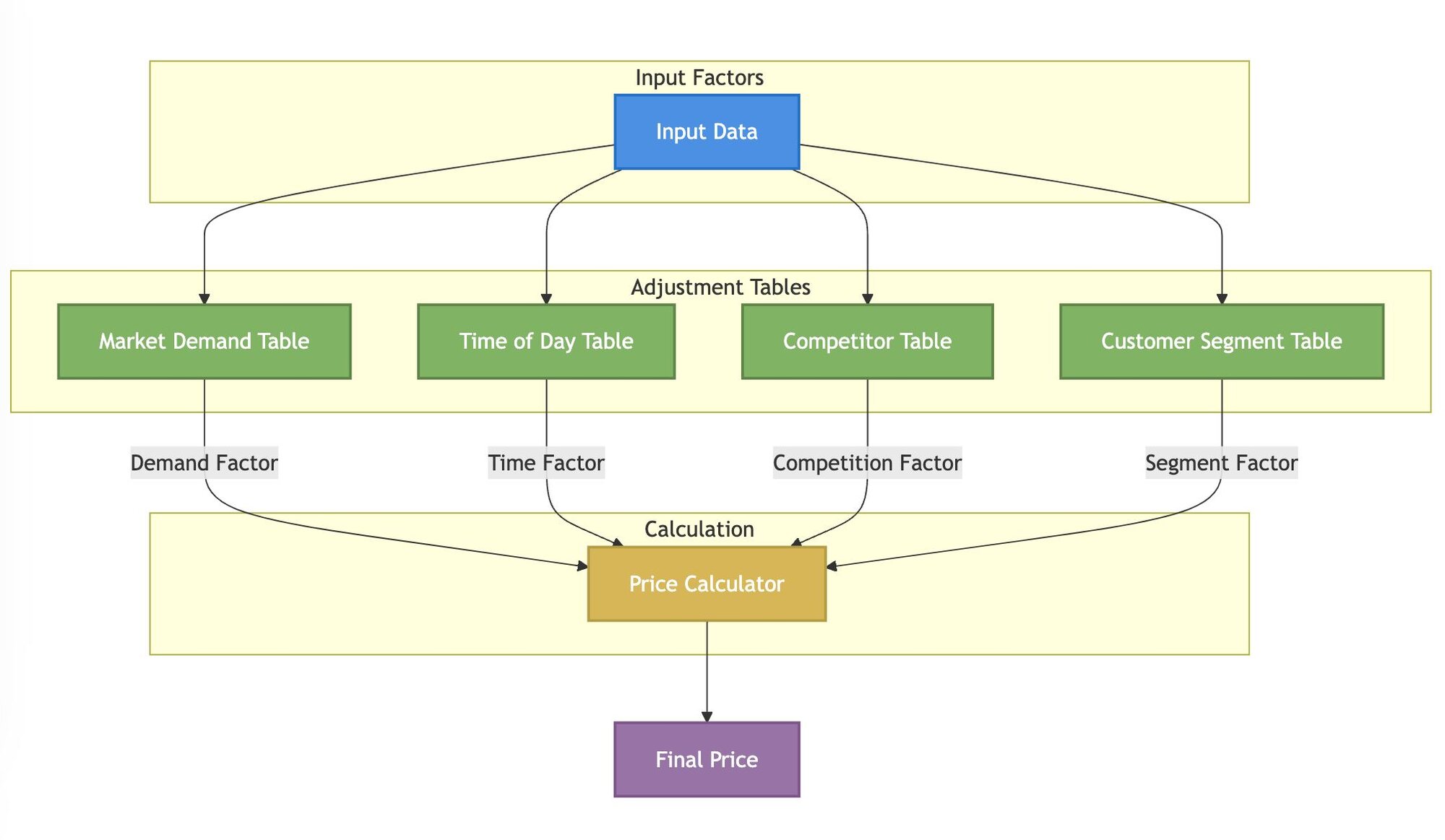What is Dynamic Pricing and Why It Matters
Learn how to implement dynamic pricing strategies that automatically adjust prices based on market demand, competition, and customer behavior.

Dynamic pricing is a strategy where prices automatically adjust based on market demand, competition, and other real-time factors. This pricing approach has become increasingly crucial in modern business, with major retailers and service providers adopting it to optimize revenue and stay competitive in real-time.
In today's fast-paced digital economy, static pricing is becoming obsolete. E-commerce giants like Amazon make millions of price changes daily, while airlines adjust ticket prices every few minutes. This constant optimization ensures maximum revenue while maintaining market competitiveness.
Real-World Use Cases
Events and Venues
- Sports venues adjusting ticket prices based on team performance and rivalry matches
- Concert venues optimizing prices based on artist popularity and seat locations
- Museums offering variable admission fees during peak tourist seasons
Retail and E-commerce
- Grocery stores automating markdowns for perishable goods
- Fashion retailers managing seasonal inventory transitions
- Electronics stores matching online and in-store pricing
Travel Industry
- Car rental companies balancing fleet utilization
- Tour operators managing seasonal demand
- Parking facilities adjusting rates during events
Challenges in Implementing Dynamic Pricing
While dynamic pricing offers significant benefits, implementation challenges exist. Data quality and availability often pose initial hurdles. Systems must process multiple data points quickly while maintaining accuracy. Customer perception also needs careful management - price changes must feel fair and transparent.
Technical infrastructure presents another challenge. Traditional pricing systems often struggle with real-time adjustments and multiple variable processing. Integration with existing e-commerce platforms and point-of-sale systems requires careful planning and execution.
Implementation Success Factors
Key factors that determine successful dynamic pricing implementation:
- Start Small: Begin with a single product line or service category
- Clear Rules: Establish transparent pricing boundaries and rules
- Monitor Impact: Track key metrics like revenue, margin, and customer satisfaction
- Regular Reviews: Periodically assess and adjust pricing rules
- Customer Communication: Maintain transparency about pricing practices
Common Dynamic Pricing Strategies
Time-based Pricing
Time-based pricing adjusts prices according to specific times, seasons, or events. Hotels increase rates during peak tourist seasons, while restaurants offer happy hour discounts during slower periods. This strategy optimizes revenue by matching price sensitivity to customer behavior patterns.
Demand-based Pricing
Demand-based pricing responds to real-time market demand. When demand rises, prices increase to maximize profit margins. Conversely, during low-demand periods, prices decrease to stimulate sales. Ride-sharing services like Uber use this strategy effectively with surge pricing during high-demand periods.
Competitor-based Pricing
Competitor-based pricing automatically adjusts prices in response to competitor movements. This strategy ensures your products remain competitive while maintaining profit margins. Many retailers use automated tools to monitor competitor prices and adjust accordingly.
Customer Segment Pricing
Different customer segments have varying price sensitivities and perceived value. Premium customers might value convenience over cost, while new customers might need introductory offers. This strategy personalizes prices based on customer characteristics and behavior patterns.
Building a Dynamic Pricing Engine with GoRules
GoRules simplifies dynamic pricing implementation through its intuitive decision modeling interface. By combining different pricing factors into a single decision model, businesses can create sophisticated pricing strategies without complex coding.
The process involves:
- Defining pricing variables (demand levels, time periods, competitor positions)
- Creating adjustment rules using decision tables
- Setting up real-time price calculations
- Testing and validating pricing scenarios
Our dynamic pricing implementation uses GoRules JDM (JSON Decision Model) to create a flexible and maintainable pricing engine. The model consists of three main components that work together to calculate the final price.
Input Factors
Receives the initial request containing:
- Base price
- Current market demand
- Time of day
- Competitor price position
- Customer segment information
Adjustment Tables
The model uses four decision tables, each responsible for a specific aspect of pricing:
- Market Demand Table: Evaluates current demand levels (high/medium/low) and determines appropriate price adjustments
- Time-Based Table: Analyzes time periods (peak/normal/off-peak) to apply time-sensitive pricing
- Competitor Analysis Table: Compares market position (higher/equal/lower) and adjusts pricing accordingly
- Customer Segment Table: Applies segment-specific adjustments based on customer type (premium/regular/new)
Calculation
An expression node that:
- Combines all adjustment factors
- Applies them to the base price
- Calculates the final adjusted price
- Determines the percentage change from base price
Interactive Dynamic Pricing Calculator
Experience dynamic pricing in action with our interactive calculator. Adjust different variables to see how prices change based on market conditions, time of day, competition, and customer segments.
This demo showcases how different factors combine to determine the final price, providing transparency into the decision-making process.
By implementing dynamic pricing with GoRules, businesses can quickly adapt to market changes, optimize revenue, and maintain competitive advantage - all while ensuring pricing decisions remain transparent and manageable.
- Real-World Use Cases
- Challenges in Implementing Dynamic Pricing
- Implementation Success Factors
- Common Dynamic Pricing Strategies
- Time-based Pricing
- Demand-based Pricing
- Competitor-based Pricing
- Customer Segment Pricing
- Building a Dynamic Pricing Engine with GoRules
- Input Factors
- Adjustment Tables
- Calculation
- Interactive Dynamic Pricing Calculator

Reshaping the Insurance Industry with Steadfast Technologies

Building Python Rules Engine: Lambda and S3

